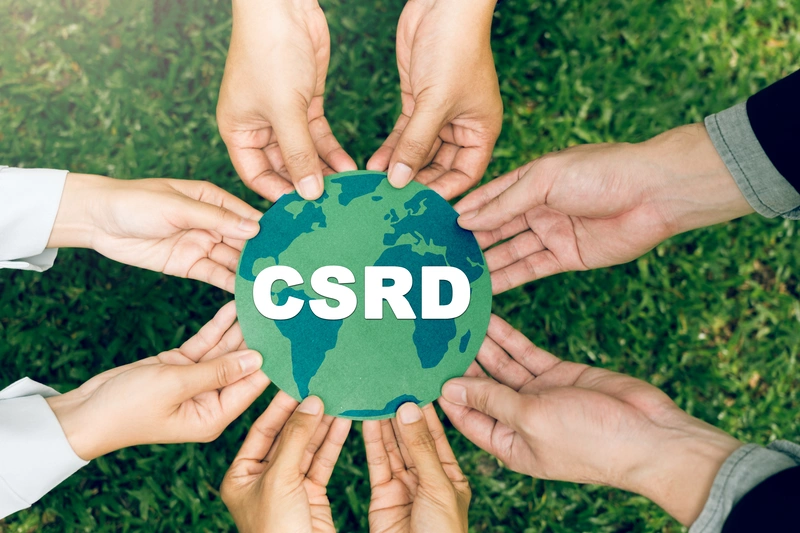You will recognize a bad translation at first glance—at least if it’s in your native language. When it comes to another language, the issue of quality management gets more challenging. We’ll show you how to spot shortcomings in the translations of your content—even if you don’t have perfect language skills.
“Quality management” means being able to recognize and rectify errors in good time. Or even better: to ensure that there are no mistakes at all. This can sometimes be tricky for you as a company when it comes to translations. At the end of the day, you have to rely on your translation service provider to a large extent because you usually don't speak the target language fluently. But how do you know that you can trust your partner when it comes to translation? We have created a list of warning signs to look out for before you start to work with new translators.
Performing quality management yourself
We recommend choosing individual passages whose accuracy you can easily identify in direct comparison with the original document. So, pick out a few prominent passages of text and spot-check them for obvious mistakes. Is the entire text in the target language or are sections of it left untranslated? Have proper names been translated? Are there any obvious omissions or added elements? In this way, you can quickly get a feel for how many errors a translation contains.
It can also help to show the text to someone who, although not a professional translator, is a native speaker of the target language. They will at least get a sense of whether a text fits with the natural flow of the foreign language.
But what else can you do to get at least a rough idea of the quality of a translation? We have prepared five practical tips to help you manage the quality of translations.
1. Grammar and spelling errors
Especially with translated texts, such as those on your website that anyone can access, translation errors can be a reputation killer. Correct spelling and grammar pave the way for a professional impression. Even if it’s your translator who messed up, any mistakes will reflect on you and your reputation. So, take a prominent sentence from your text and check it. For example, start by focusing on headlines or other particularly prominent passages on your website. After all, these not only affect your reputation but also the search engine ranking for your website.
2. Unnatural flow of language
If you notice an unnatural flow of language in one of your translated documents, this can also be a sign of a poor translation overall. For example, where is the verb in the sentence you have picked out? If a sentence that should read “I'm going to the fair to see an innovative new machine.” ends up instead as “I travels to the fair see an innovative new machine.”, then something is probably not quite right. Communicate errors openly to your translation services partner. Ultimately, you should both be pursuing a common goal: improving your translations.
3. Adaptation to linguistic and cultural idiosyncrasies
A good translator will also adapt your texts to the linguistic and cultural characteristics of the relevant country. This starts long before the linguistic formulation. Colors, for example, do not evoke the same associations everywhere. What’s more, certain words that are perfectly acceptable in one country may cause offense in another. Without in-depth knowledge of your new target market, it is difficult for you to check this.
Proverbs are classic stumbling blocks that give an indication of how attentive the translator has been. In most cases, simply translating a figure of speech word for word into another language doesn't work. At best, it will make people smile but at worst, it can lead to a loss of trust in your brand. For instance, the English phrase “Don't fall into the trap of cutting corners.” translates literally into German as “Tappen Sie nicht in die Falle, Ecken zu schneiden.” However, the German equivalent of the English expression “cutting corners” is actually “sparen am falschen Ende”, which means “saving at the wrong end.” Here’s another classic: did you know that the cloud you might be floating on is two heavenly floors lower in German and is called “cloud seven”?
4. Loss of meaning and context
Translation involves much more than converting a word in one language into an equivalent word in another language. Translation also always involves an element of interpretation. You can gauge the interpretive abilities of your translation service provider from certain phrases or words that only occur in the direct context of the topic, where they gain special meaning. Let’s take a simple example: the word “Brot” in German means “bread”—a perfectly correct translation. This literal translation will also work in most cases. But what if you have to translate a liturgical text in a Christian context? The product made of dough suddenly becomes something transcendental—and bread can also be interpreted as the “body of Christ”, at least in a religious context. Another example is the Japanese word “tsumaranai,” which means “uninteresting” or “dull”. Sounds straightforward, right? Except it’s not. That’s because the word can also express the type of modesty used to play down something that is in fact truly remarkable. Perhaps you also work in the printing industry in Germany, where the word “Vorstufe” is widely used. This can be translated into English as the “preliminary stage”. However, if this word appears in your translation, it is a strong indication that something is amiss. That’s because every print expert knows that the correct translation is “prepress”. When conducting an initial test, you should therefore pay particular attention to those words and phrases whose real meaning is evident in the jargon in your particular industry.
5. Lack of consistency
Sometimes, it makes perfect sense to use synonyms to avoid repeating the same word multiple times. In many areas, however, especially when it comes to technical processes, the use of standardized nomenclature is essential—even if it doesn’t necessarily read very nicely. After all, you want to ensure unambiguous consistency in the wording used to describe your services or products. Translation memory systems, which we also use here at ACT Translations, play a key role in the area of quality assurance. These systems save previously translated text segments, thereby ensuring a high degree of consistency in subsequent translations. If translation memory systems are used, the more terms are stored in the database, the more accurate the translations will be. This also means that you need to have a longer-term working relationship with the same translation service provider if you want to reap the full benefits of these tools. A positive side effect of using translation memory systems is that they not only increase quality but also efficiency. You save time without having to compromise on translation quality.
As you can see, checking the quality of a translation is possible on many different levels, even without having in-depth language skills, and is the first step toward consistent quality management. There are plenty of red flags: from translations of proverbs that lack imagination and context to obvious errors in prominent text passages on a website or the insensitive use of particular words.







